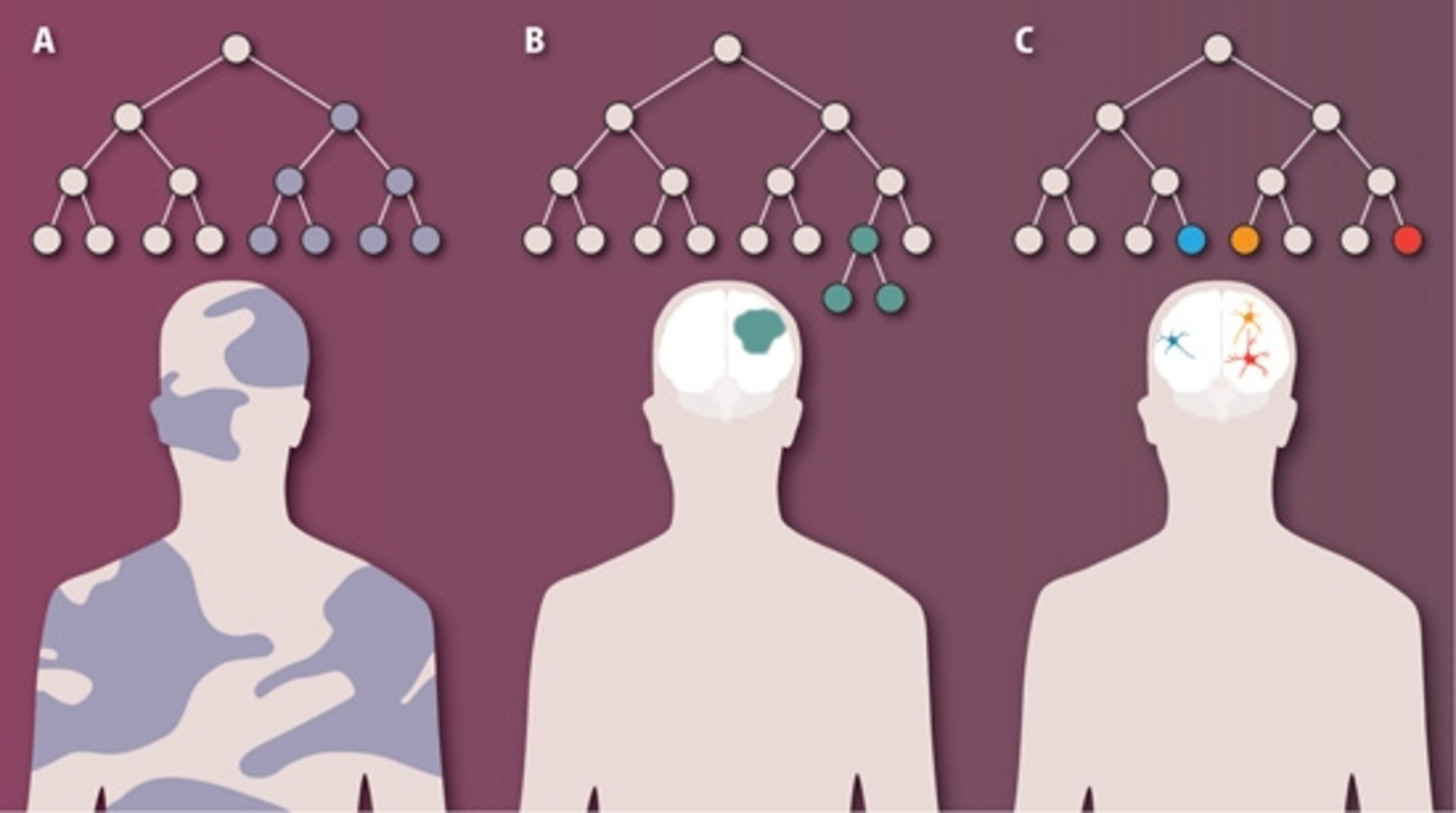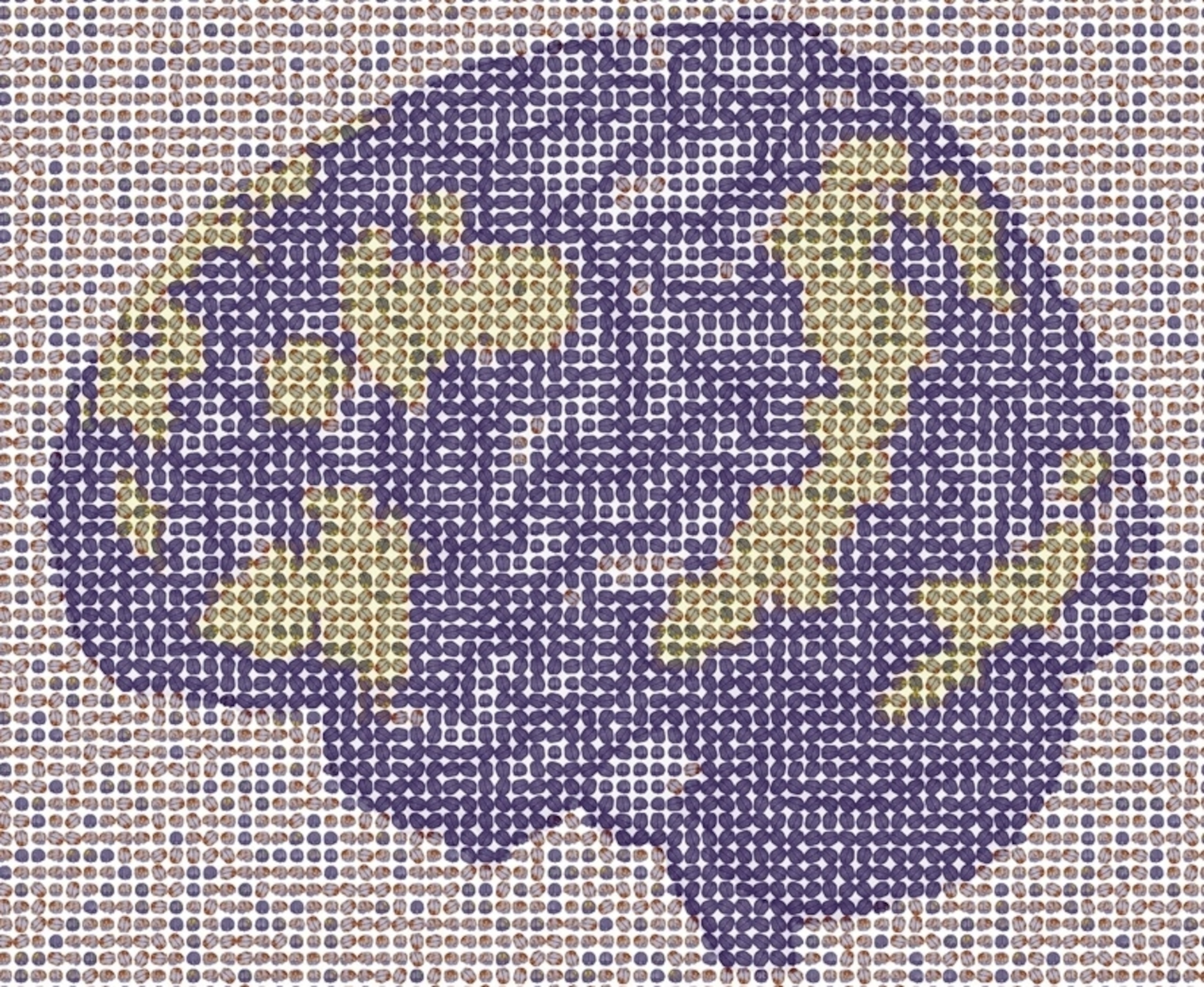It’s not exactly true to say that each of us has our own genome. We have genomes. Some of us, known as chimeras, have genomes from more than one person. The cells of children linger behind in their mothers; in the womb, cells from twins can intermingle. The rest of us non-chimeras can trace our genomes to one origin–the fertilized egg from which we developed. But as the cells in our bodies divided, they sometimes mutated, creating a panoply of genetic variation known as mosaicism.
I wrote about chimeras and mosaics in September in the New York Times. My article was a status report of sorts. Scientists have known about our many genomes for decades. But with the advent of single-cell genome sequencing, they’re now learning some surprising things about our genetic multitudes. As a status report, my story was far from the final word. And now, just a couple months later, a new study has come out that sheds more light on a place where our mosaic nature can have huge consequences: our brains.
For a long time, scientists who study mosaicism have focused their attention on its dark side. In the 1960s, for example, scientists recognized that cancer cells were the result of our mosaic nature. Mutations arose in a line of cells, and eventually those mutations drove the cells to grow quickly and develop into tumors. And since then mosaicism research has continued to revolve around diseases. A number of rare diseases such hemimegalencephaly–in which one side of the brain is bigger than the other–have been traced to mutations that arise in developing cells.
This is important research, but it risks providing a lopsided view of our mosaic nature. We are left to wonder how many genomes a healthy person can have. Scientists have started to shift their attention from disease to health, and they’re finding that we can have a surprisingly large amount of variation with no apparent ill effect. In the latest issue of Science, Fred Gage of Salk Institute for Biological Studies and his colleagues provide a deep look into the mosaic nature of healthy brains.
First, they watched the brain’s mosaic emerge. They grew three colonies of human stem cells, rearing each of them in a broth of nutrients. Mixed into that broth where chemicals that coaxed the stem cells to develop into neurons. The scientists then plucked out 40 of these neurons and analyzed their genomes. Thirteen of the 40 cells had changed markedly from their ancestors. Some had accidentally gained an extra copy of a chromosome, while others had copies of smaller chunks of DNA. In other neurons, chunks of DNA had been chopped out. The changes were never the same, which meant that they had originated separately.
The scientists then turned their attention to real brains. They took tissue samples from three healthy people who had died in their twenties in accidents. From those samples, the scientists isolated 110 neurons and surveyed their genomes. In those neurons, they found a similar pattern to the one they saw in their dishes of stem cells. Forty-five out of the 110 neurons had either extra copies of DNA or missing segments. Again, none of the neurons shared the same mutations. That finding means it’s unlikely that the neurons share mutations that arose in a single neuron early in development. Instead, new mutations kept emerging as the brains matured and neurons divided.
Far from being a rare, dangerous fluke, in other words, mosaic neurons turn out to be abundant in our brains. The figure at the bottom of this post shows how this new study expands our understanding of how we become mental mosaics.
With so much mutating going on in our brains, it may be hard to believe that our brains can work at all. In a commentary accompanying the paper, Evan Macosko and Steven McCarroll of Harvard sketch out some defenses our brains may have against this genomic messiness. For one thing, mutations tend to emerge in the parts of the genome that a cell uses least. So many of the mutations that Gage and his colleagues have discovered may affect genes that don’t matter in the brain anyway.
Even if a mosaic neuron does turn out to be defective, the brain may have ways to prevent it from causing much trouble. When the brain develops, it starts by producing an abundance of connections between its neurons. Only later does it then prune many of those connections back. The brain may take its pruning shears to defective mosaic neurons with particular vigor, cutting them off from conversations with other cells.
It’s even possible that those misfit neurons can let our brains perform in new ways, Macosko and McCarroll suggest. The brain may not just tolerate diversity. It may depend on it.


